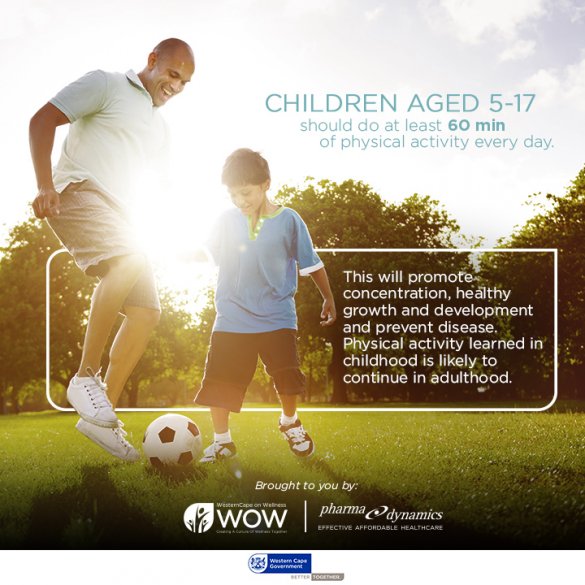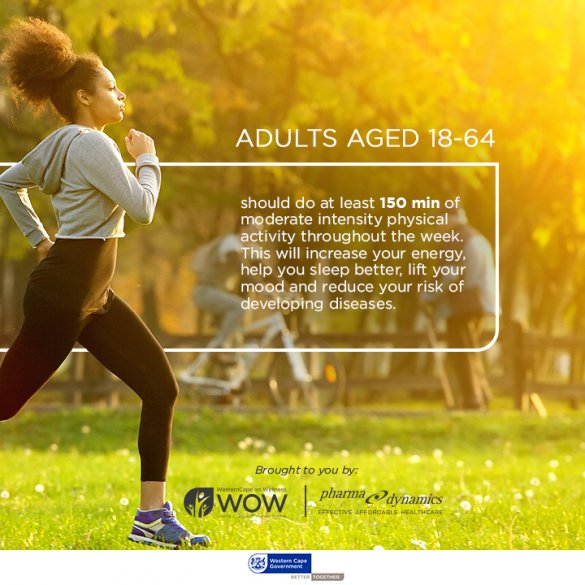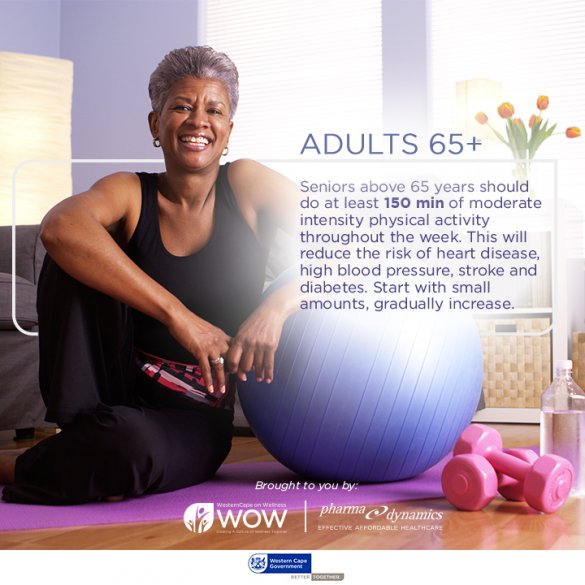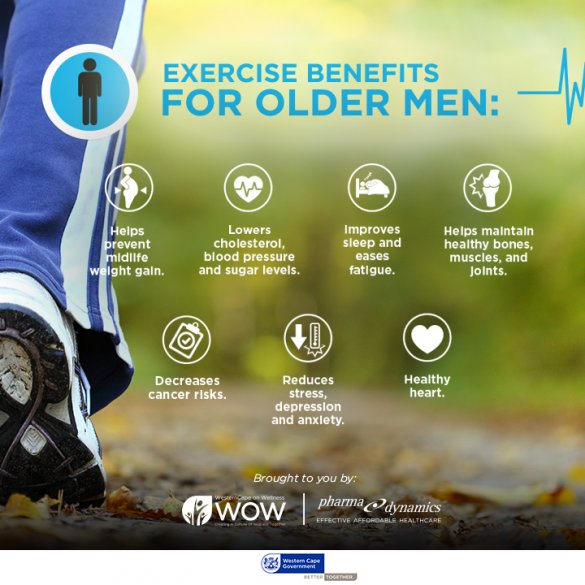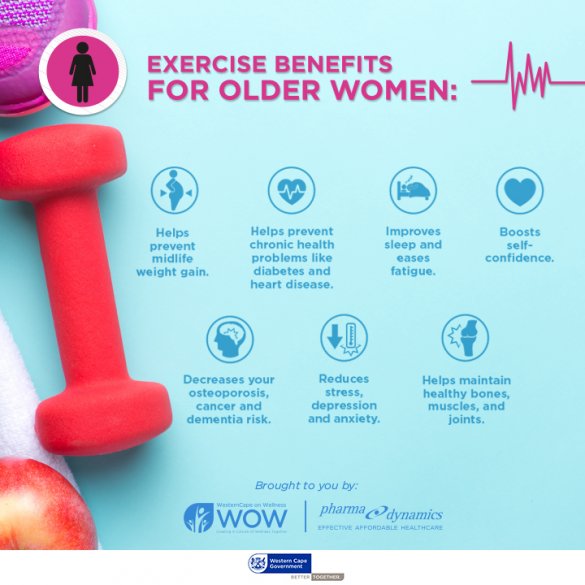Physical activity is not about sport, and it is about more than just exercise. It is about the relationship between human beings and their environment, and about improving human wellbeing by strengthening that relationship. It is not about running on a treadmill while staring at a mirror and listening to your iPod. It is about using the body that we have in the way it was designed, which is to walk often, run sometimes, and move in ways where we physically exert ourselves regularly whether that is at work, at home, in transport to and from places, or during leisure time in our daily lives.
There is a large body of evidence worldwide to show that living a physically inactive lifestyle contributes in a major way to death and disability from chronic diseases. Living in inactive lifestyle may place you at risk for:
- Cardiovascular disease
- Type 2 diabetes mellitus
- Obesity
- Some cancers
- Poor skeletal health
- Some aspects of mental health
An inactive lifestyle can also predict overall mortality, and may result in a poor quality of life!
But it’ not all doom and gloom! Living an active lifestyle, that is, any kind of movement that burns energy, may prevent any of these chronic conditions. Men and women of all ages from all over the world, from various socioeconomic groups and ethnicities are healthier when they achieve the public health recommendation of at least 150 minutes a week (or 2.5 hours a week) of moderate-intensity aerobic physical activity, such as brisk walking. That’s equal to only half an hour a day of being active in such a way that your heart rate increases and your breathing increases too. Additionally, active modes of travel, such as walking and cycling to and from places are good for the environment, which in turn also has a positive impact on health.
But the benefits of physical activity are far-reaching and reach beyond health alone. Being physically active contributes majorly to one’s overall physical and mental wellbeing and can create a sense of purpose and value, a better quality of life, improve sleep and reduce stress, as well as create stronger relationships and social connectedness.
The Lancet, Physical Activity Series, 2012
What do I need to do to be more active? Sit less and move more – and any kind of movement will do! In order to prevent or manage a number of chronic diseases, sitting less is a great way to start. This means for example, taking short standing or walking breaks throughout the day. Research has shown that being sedentary for long periods throughout the day is linked to a number of chronic diseases, even if you do achieve the 150 minutes of physical activity a day. This means breaking up long periods of sitting as often as you can.

